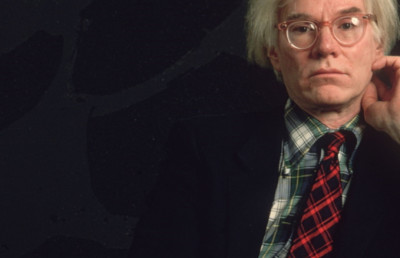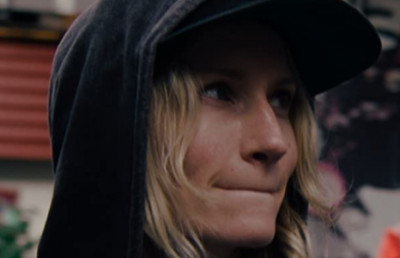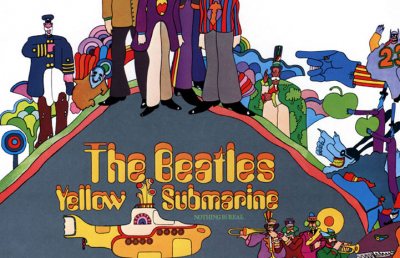“Meet Me in Montauk”: Michel Gondry’s Incorporation of Avant-Garde Surrealist Practices in Eternal Sunshine of the Spotless Mind (2004)
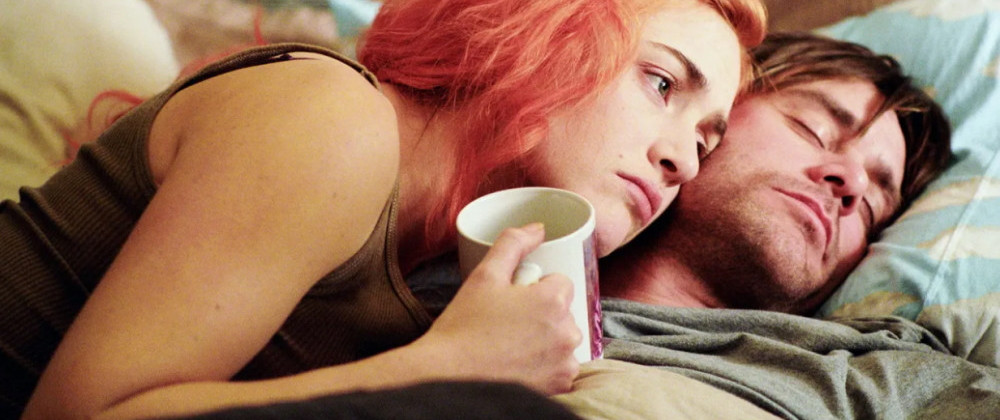
Ranked number six on the British Broadcasting Corporation’s 2016 list of “The 21st Century’s 100 Greatest Films” (BBC “21st Century’s 100 Greatest Films), Michel Gondry’s independent production Eternal Sunshine of the Spotless Mind (Michel Gondry, 2004) explores themes of love, loss, and memory. Conceived by Gondry in collaboration with the renowned American screenwriter Charlie Kaufman (Cardullo 299), this film tells the story of Joel and Clementine, two former lovers who decide to erase their memories of one another, with the help of Dr. Howard Mierzwiak’s memory-wiping technology, after their two-year tumultuous relationship ends in heartbreak. While Gondry’s unique exploration of Joel and Clementine’s relationship clearly blurs the boundaries between the romantic comedy and science fiction genres (300), the filmmaker’s spin on the traditional boy-meets-girl trope also has experimental qualities. More specifically, a closer look at the filmmaker’s narrative structure and aesthetic style reveal that Gondry’s experimentation with film form in Eternal Sunshine of the Spotless Mind reflect aspects of the avant-garde practices Surrealist filmmakers were working with in the 1920s.
Before considering how Gondry incorporates aspects of Surrealism in Eternal Sunshine of the Spotless Mind, it is important to consider what this film movement entailed. Above all, Surrealism was an art, literature, and film movement that flourished in Europe between 1924 and 1929 (Bordwell and Thompson 474-475). Conceived by French writer André Breton (Curtis 22), this cultural movement revolved around finding ways to translate humans’ unconscious thoughts and desires into art (Bordwell and Thompson 474). Drawing from elements of Freud’s psychoanalytic theories, Breton believed that by spontaneously writing or painting without any aesthetic or intellectual intention, Surrealist practices would reveal elements of the artist’s unconscious thoughts or dreams that were otherwise unattainable on a conscious level (Curtis 22). Surrealist filmmakers specifically based their practices on Breton’s idea of the “untamed eye,” (Fotiade 394) which emphasized that there were many things that the eye could not physically see (394). Furthermore, Breton’s theory advocated what Ramona Fotiade describes as “the abolition of artificial boundaries between what we see and what we only begin to see, or have never seen before” in her article “The Untamed Eye: Surrealism and Film Theory” (395). By transgressing these limits, Breton’s ultimate objective was to reach a new level of reality he referred to as a “surreality” (Sharot 70). Furthermore, like other Surrealists working in various mediums, filmmakers producing movies within the cultural movement were especially interested in the way dreams could showcase elements of the unconscious, as well as, challenging conservative and bourgeois social norms (71). However, it is also important to distinguish that Surrealist filmmakers were not necessarily interested in portraying the content of dreams, but rather using cinematic techniques to capture the way events in our dreams transpire in our minds (Fotiade 396). Due to the fact that dreams are often impossible to describe in words (396), Surrealists believed that cinema’s position as a visual medium made it the best method to translate the often bizarre, nonsensical, and intangible qualities of dreams into images (396-397).
Inspired by Breton’s dichotomy between the real and imaginary, his refusal to separate the two, as well as, their own interest in how dreams unfold, Surrealist filmmakers developed their own filmic practices (396). On one hand, Surrealist filmmakers chose not to present their narratives in a linear manner nor make connections between the events they displayed apparent (Bordwell and Thompson 475). Furthermore, they often chose to juxtapose images in order to trigger emotional responses in the viewer (475). The overall incoherence of Surrealist movies was further intensified through the filmmakers’ bizarre mise-en-scène and editing techniques that challenged traditional and rational representations of time and space (475). However, it was also important for Surrealist filmmakers that they did not stray too far from the real (Curtis 31). By maintaining some semblance of logic, Surrealist filmmakers would be able to ensure that the bizarre elements of their movies could trigger more intense feelings of discomfort amongst viewers (31). Ultimately, Michel Gondry’s Eternal Sunshine of the Spotless Mind is a fitting example of a film that draws from Surrealists’ narrative and aesthetic approaches to cinema.
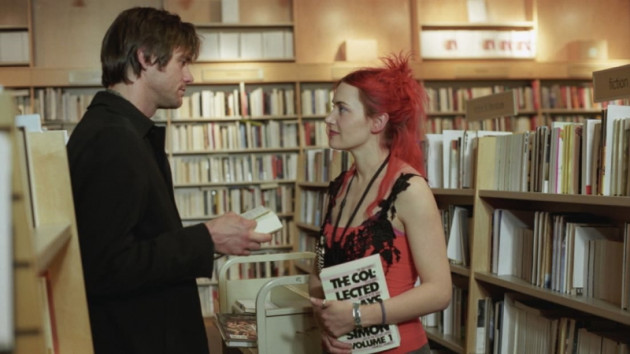
First and foremost, the narrative structure Gondry uses to tell Eternal Sunshine of the Spotless Mind is reminiscent of the non-linear stories that 1920 Surrealist filmmakers often produced for the screen. In his article, “Art Cinema and New Hollywood: Multiform Narrative and Sonic Metalepsis in Eternal Sunshine of the Spotless Mind,” Matthew Campora identifies Gondry’s complex narrative structure as a “multiform storyline” (Campora 120). Defining this as a type of narrative “that [features] multiple protagonists and, as a result, [is] more complex than those with a unified structure” (121), Campora highlights that multiform storylines directly stem from experimental practices, especially those of Surrealists (120). Furthermore, Campora emphasizes that multiform narratives become more complex when filmmakers add “fragmented temporalities” (121) and/or “mixed realities” (121) to the equation (121). In this particular case, Gondry’s Eternal Sunshine of the Spotless Mind’s multiform narrative combines the two considering that the movie is set in both the past and present, as well as, in Joel’s real life and his imagination.
On one hand, Gondry’s narrative depicts events that occurred during and after Joel and Clementine’s relationship. However, he does not present these events in chronological order, but rather begins his film in the present, intermingles past and present as Joel relives his memories while asleep in the middle, and returns to the present in the final scenes (Silvey 139). Most importantly, even though this narrative structure is clearly unconventional, it also has a jarring effect on the viewer since there is no real indication that the film takes place in two different time periods until about thirty minutes into the movie (Campora 123). More specifically, the film begins with Joel waking up, impulsively jumping on a train to Montauk, writing in his diary on the porch of a snowy beach, finally meeting Clementine, speaking with her on the train ride back to New York City, and having a drink with her. Furthermore, after spending time stargazing on the frozen Charles River, and driving her home in the morning after their date, this opening sequence seems like it portrays the beginning of Joel and Clementine’s love story. Suddenly, as Joel sits in his parked car outside of Clementine’s apartment, a man who we later find out is a lab technician at Lacuna Inc., taps on his window and asks Joel why he is parked there, however, Joel does not recognize him. Film critic Nick James defines this moment as a “moment of dislocation, where the narrative throws itself out of predictable whack” (James 17). The initial bizarreness of this moment is intensified when the opening credits finally roll and we see Joel crying in his car presumably because his relationship with Clementine has come to an end. Ultimately, while these moments hint that there are multiple timelines occurring in the film, they simply do not present enough information to completely confirm the theory, and consequently, trigger feelings of unease in the viewer because these events seem out of place.
On the other hand, Gondry’s multiform narrative does not only occur in two periods of Joel’s life, but also in his imagination for the majority of the film. In fact, it is Gondry’s representations of Joel’s dreams that echo the 1920s Surrealist movement’s interest in dreams and the unconscious most clearly. Above all, Gondry’s depictions of Joel’s dreams are not simply Surrealist because their content reveals aspects of the main character’s unconscious mind, but because of the unique way the filmmaker represents the sequences taking place in his mind (Cardullo 301). For example, Gondry depicts a moment of Joel’s memory where he and Clementine embrace under the covers of their bed. Then, the scene unexpectedly cuts to the two lying on the Charles River in the middle of winter. Next, the scene cuts to a bird’s eye view shot of Joel and Clementine lying in the same position but this time in the middle of a dark train station. Illuminated by a spotlight, a subsequent shot captures Clementine as she is violently pulled away from Joel and disappears into the dark. The scene cuts to Joel standing alone at the Charles River and pleading with Dr. Mierzwiak to keep his memories intact. Suddenly, Clementine abruptly reappears and Joel grabs her hand and leads her aimlessly across the ice to try and save her from the memory-wiping mechanism. Shots of them running around are intercut with images of Joel and Clementine crawling under the covers, Joel drawing pictures of her, and the two of them wrestling and jumping in bed, all of which are captured in slow or fast motion. Suddenly, Gondry cuts to Joel and Clementine running around the train station as bystanders with blurred faces begin to disappear. From the train station, Joel drags Clementine through the narrow corridors of his home, past the memory of a party that took place long ago, and into Dr. Mierzwiak’s office. There, the doctor tells him that he cannot stop the process and when Joel turns to Clementine, the figure of a random woman with a blurry face stands in her place.
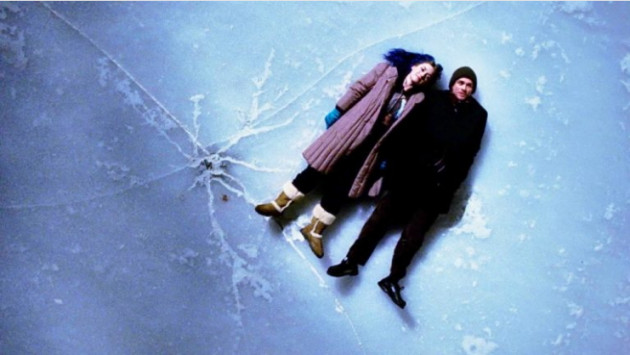
Represented in an incoherent, illogical, and distorted manner, this dream sequence clearly seems to have its own convoluted narrative structure. In his article “Falling in and out of Love, Again,” Bert Cardullo applauds the fact that Gondry did not use traditional flashbacks to depict Joel’s dreams or turn them into surreal caricatures by using too many technical effects (301). He states: “For [Gondry] shows us, more seductively, more compellingly, than other directors have done, how the freehand juxtaposition of filmic frames can capture on screen the flashes in our minds that slip between the words” (301). With images of blurred faces and jump cuts between locations, this technique definitely translates Joel’s dreams in a realistic way (301). Furthermore, it can also be argued that since his memories appear to us in dream-logic, they are alienating because they are not presented with enough context, and consequently, give us the impression that we are not privy to some private joke between the couple or are missing important information that can help us draw meaning from his intimate memories. In the end, Gondry’s dream sequences reflect Surrealist filmmakers’ interest in portraying stories in a manner similar to the nonsensical logic that occurs in their dreams (Fotiade 396) and proves that film continues to be the best medium to portray this particular facet of the unconscious today (Cardullo 301-302).
Lastly, Eternal Sunshine of the Spotless Mind also satisfies Breton’s call for the elimination of the “artificial boundaries” (Fotiade 395) between the real and the imaginary. In fact, Breton’s preoccupation was one that Gondry also shared. In an interview with American Cinematographer, the movie’s director of photography Ellen Kuras states: “[Gondry] felt that the more real the film looked, the more you would believe it when the memories melted into reality” (Pavlus 37). Moreover, we can see how Gondry attempts to bridge the gap between the real and the imaginary in his film through his particular lighting and sound choices. In terms of lighting, Kuras explains that Gondry stressed that both the events taking place in the present and those in Joel’s mind had to look and feel realistic (37). To create this effect, the director insisted that most of the film was shot on location and used natural sources of light already available to illuminate them (37). Proving to be a great feat, the crew ended up shooting some scenes on ancillary sets and Kuras supplemented the available light by hiding little lights around them to keep it looking as natural as possible (39). Even in the most dramatic moments in Joel’s dreams, Kuras’s lighting remains within reason, for example, she simply secured a clip light on top of the camera to illuminate the actors’ faces in darkness and create the effect that Joel was navigating the “tunnel of [his] mind” (42). Ultimately, Gondry’s choice of lighting gives the impression that the dreams are an extension of reality rather than something completely separate.
Conversely, Gondry’s idea of “memories melted into reality” (37) is taken a step further through his use of what Campora calls “sound bridges” (Campora 120). Typically used to create a connection between shots to preserve a sense of continuity (124), the sound bridges in Eternal Sunshine of the Spotless Mind do not only connect scenes that take place in a different space or time, but also those that take place inside and outside Joel’s mind (127). For instance, at one point in the film, Gondry captures Joel’s memory of the time he ate Chinese food with Clementine on his couch (127). Yet, all of a sudden, Joel hears and reacts to Patrick telling Stan that he stole a pair of Clementine’s underwear from her apartment as the two set up the memory-wiping machines in Joel’s house while the main character is asleep (127). In this moment, Gondry reveals that the film does not just depict Joel’s memory, but shows that his dreams can be influenced by conversations happening in real time (127). Thus, Gondry’s use of sound divulges that the various levels of the film’s narrative are much more intertwined than we might expect (127) and his merging of past, present, as well as, real and imaginary events, definitely achieve the type of “surreality” (Sharot 70) Breton proponed in his conception of Surrealism (70).
In conclusion, Michel Gondry’s experimentation with narrative and his unique cinematic practices used in Eternal Sunshine of the Spotless Mind clearly recall those that Surrealist filmmakers employed in the 1920s. On one hand, the director’s convoluted narrative structure and portrayal of Joel’s dreams reflect the Surrealists’ desire to reject popular Hollywood conventions, as well as, their interest in illustrating the way events in dreams transpire, respectively. On the other hand, elements of Gondry’s aesthetic style, such as the lighting and sound, work to fuse the real and the imaginary together, and consequently, clearly evoke Breton’s proposition that Surrealist films should not distinguish between what people can physically see and the hidden aspects of the unconscious, but meld them together. In the end, the Surrealist movement eventually dwindled in the 1930s after many of its key members became involved in politics (Bordwell and Thompson 476). Nevertheless, elements of its style were soon appropriated over the course of film history (476) and films like Eternal Sunshine of the Spotless Mind reveal how they continue to evolve.
Sierra Lapointe looks at how Michel Gondry incorporates elements of Surrealist art practice into his own unique filmmaking style.
Works Cited
Bordwell, David and Kristin Thompson. Film Art: An Introduction (Tenth Edition). New York: McGraw Hill, 2013. Print.
Campora, Matthew. “Art Cinema and New Hollywood: Multiform Narrative and Sonic Metalepsis in Eternal Sunshine of the Spotless Mind.” New Review of Film & Television Studies 7.2 (June 2009): 119-131. Web. 23 Nov. 2016.
Cardullo, Bert. “Falling in and out of Love, Again.” Hudson Review 60.2 (Summer 2007): 299-307. Web. 23 Nov. 2016.
Curtis, David. “The European Avant-Garde.” 1971. Experimental Cinema. Ed. David Curtis. New York: Dell Publishing, 1971. 14-40. Print.
Fotiade, Ramona. “The Untamed Eye: Surrealism and Film Theory.” Screen 36.4 (Winter 1995): 394-407. Web. 23 Nov. 2016.
James, Nick. “I Forgot to Remember to Forget.” Sight and Sound 14.5 (May 2004): 14-18. Web. 23 Nov. 2016.
Pavlus, John. “Forget Me Not.” American Cinematographer 85.4 (April 2004): 36-47. Web. 23 Nov. 2016.
Sharot, Stephen. “Dreams in Films and Films as Dreams: Surrealism and Popular American Cinema.” Canadian Journal of Film Studies 24.1 (Spring 2015): 66- 89. Web. 23 Nov. 2016.
Silvey, Vivien. “Not Your Average Love Story: Film Techniques in Eternal Sunshine of the Spotless Mind.” Screen Education Issue 53 (Autumn 2009): 139-144. Web. 23 Nov. 2016.
“The 21st Century’s 100 Greatest Films.” British Broadcasting Corporation, 2016. Web. 23 Nov. 2016.


